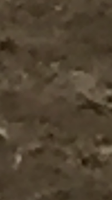The starting point for my research and practice has been a
collection of poems called Crow by Ted
Hughes, illustrated by the artist Leonard Baskin. Hughes's gritty poems and Baskin's
dramatic wood block prints seemed to drive to the core of something bleak in
nature which appeals to my sensibilities. But more their combination also
reflected a powerful symbiotic working and understanding that so enhanced the
project and questioned the role of illustrator.

I began to try and create my own versions of the crow. I drew
using ink as a mirror to Baskin's technique and sought ways of manipulating the
crow's image into something obscene, trying to reflect the words of the poems. But
on some level this didn't work for me and the illustrations I preferred were
very much closer to the original image of the crow and relied more on an
aggressive posture of the bird, in the chosen photograph. I looked at other
Illustrators experiences such as Lord's
A Journey of drawing an illustration of a Fable for insight.

But in what respect did this reflect the status of
illustration today? Delving deeper into what Illustration is perceived to be (the
book The Education
of an Illustrator being of particular
interest) and an area that is much discussed today, I recognized the
concept of Illustrator as Author and that on some level Baskin was embracing. The
boundaries between the ownership, or originality, of the visual imagery of the
illustrated words was blurred. An illustrator could quite easily own the visual
language of a text more convincingly, than the writer, despite the work being their
original concept.

I saw this could create a confused identity for the
Illustrator, through my own drawing and reading texts like
The End of Illustration by HELLER . When
did their work move from being a work of art to an illustration? How much ownership
of the visual concepts did they have when working on illustrating a text? For
me the prints by Baskin exist separately from the words but so clearly illustrated
the meaning of the poetry, which also reflected an unfathomable nature.
I felt like I had to grasp more of the narrative of the
poem though text like The Author/Illustrator by Brodner informing
my practice and decided that I would try and present a whole poem
through one illustration. I produced a series of studies that I combined in one
image depicting the poem Crow's Fall by
Ted Hughes. I supported the content through walks in the country and a trip to a zoological museum, my own photographs and
range of secondary sources.

I stood before the black and white Illustration of the
work and felt that something was missing potentially. We then had a workshop
with Kerry Andrews where we looked at grounds on to which we might work and I
began a series of studies of a range of mid tone papers. I also found the alabaster
drawings of Tacita Dean inspiring. I worked up grounds, painting on mid tones
and effecting the crow with white paint. For me at this point they engage with
the question of what is an illustrator and when does a work become an
illustration, but also they reflect something primal that the words of the poem
embody.













